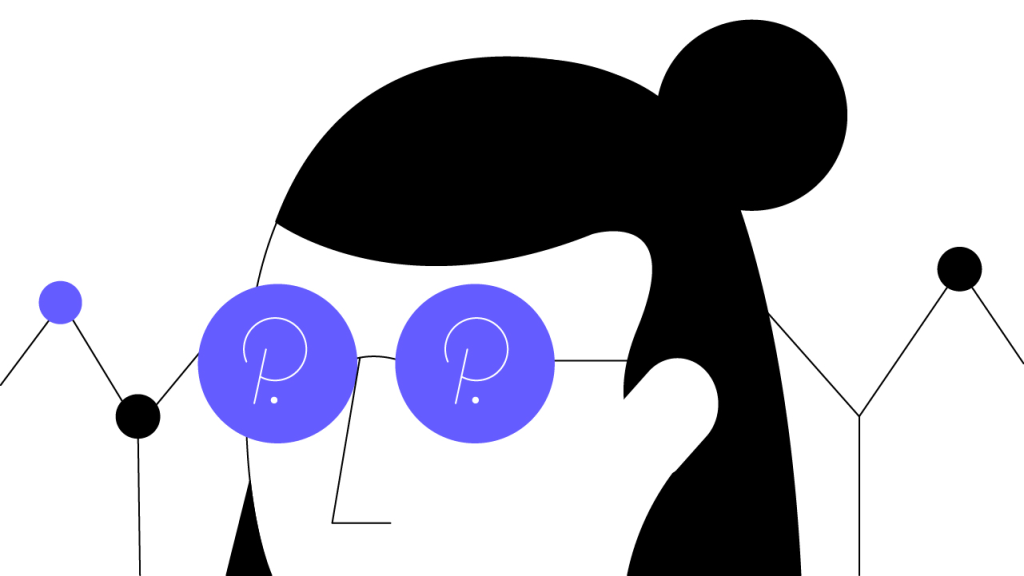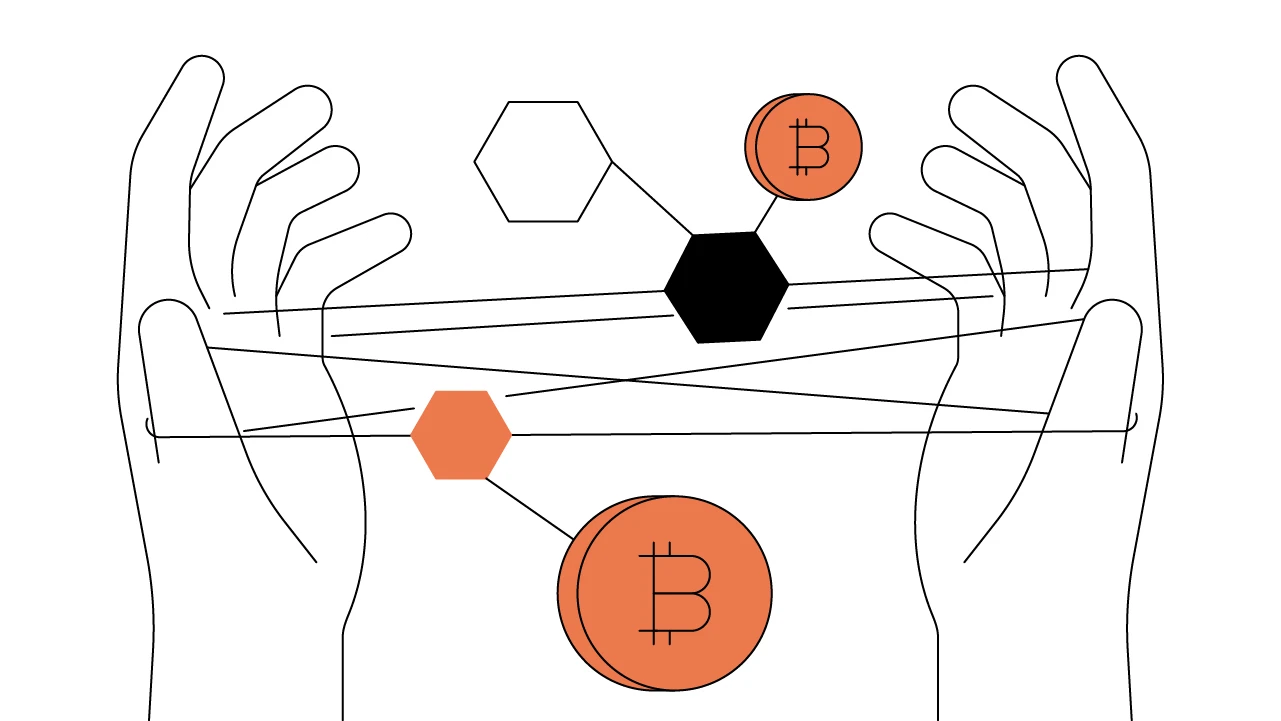Contents
Polkadot (DOT): Envisioning Web 3.0
Polkadot’s (DOT) ambitious vision for Web 3.0 aims to leverage blockchain technology to create a more private, decentralized internet.
Updated October 11, 2023 • 3 min read

Summary
Funded through an Inital Coin Offering in 2017, Polkadot’s blockchain went live in 2020. Polkadot is a security-focused cross-chain system that allows other blockchains to integrate and interact with the Polkadot blockchain. It allows for forkless upgrades with its decentralized governance model via on-chain voting with its DOT coin. The DOT cryptocurrency is also used for financial incentives and disincentives via Polkadot’s staking and slashing mechanisms. Supported by the research-driven non-profit Web3 Foundation, Polkadot aims to foster a more decentralized, transparent, and inclusive internet architecture.
Introduction to Polkadot: Web 1.0, Web 2.0, and Web 3.0
Founded by Ethereum’s Gavin Wood and backed by Parity Technologies and the Web3 Foundation, Polkadot and its native cryptocurrency, DOT, are designed to tackle the Web 3.0 challenge. Web 1.0 (the original World Wide Web) came to fruition in the early 1990s, while Web 2.0 began about 10 years later, with platforms such as Amazon, Facebook, Airbnb, LinkedIn, Alibaba, and Twitter — which offer dynamic and multi-functional application experiences across all our devices. However, many criticize Web 2.0 for being overly centralized, asserting that this attribute has paved the way for excessive focus on profit, unreasonable types of advertising, frequent mass surveillance, increased security breaches, decreased privacy, and widespread data theft. Such phenomena have left many disenfranchised, questioning whether the system truly benefits its users. In response, Web 3.0 seeks to leverage blockchain technology in a bid to flip the Web 2.0 model on its head and link programs directly with each other, turning centralized applications into decentralized protocols.
Polkadot’s History and Relationship with the Web3 Foundation
Along with the thousands of blockchain networks currently in existence, Polkadot contributes to the new, transparency-focused, and decentralized version of the Internet: Web 3.0. Polkadot is the crowning project supported by the Web3 Foundation — a non-profit organization based in Switzerland, and founded in mid-2017 by Peter Czaban, Robert Habermeier, and former Ethereum CTO and co-founder Gavin Wood. After Wood’s departure from Ethereum, he founded Parity Technologies in 2016, and soon after, Parity and the Web3 Foundation began developing the Polkadot blockchain. In October 2017 Polkadot successfully completed an Initial Coin Offering (ICO) raising 145 million U.S. dollars. Two weeks after the Polkadot ICO, a hack on Parity’s multi-signature wallet froze 513,774 ether (ETH), resulting in a loss of about 150 million U.S. dollars — one of the biggest hacks in cryptocurrency history. A week later, Web3 told investors they still had the funds to deliver Polkadot despite the attack, and the project continued its development.
The Web3 Foundation focuses on fundamental research in cryptography, algorithms, economics, and networking. The foundation also collaborates with blockchain development teams, provides grants to blockchain start-ups, and supports the blockchain community’s education and growth. The underlying mission of Web3, Polkadot, and Parity is to further the development of blockchain and decentralized web software protocols to create a more transparent internet that gives users more control over their personal data. These organizations believe that centralized monopolization of data gives corporations too much power, and that the world needs another option.
Utility of Polkadot’s DOT Coin
The Polkadot ecosystem is powered by the DOT cryptocurrency, which is used for five main purposes:
Economics: DOT is used to reward network nodes that run on the network’s consensus mechanism, and is also used to fund the ecosystem’s treasury and to control the inflation rate of the asset.
Governance: DOT coin holders help maintain the integrity of the protocol’s on-chain decision-making process via the Relay Chain, which is Polkadot’s main blockchain network.
Staking: Using DOT as collateral helps ensure coin holders behave honestly and allow validators to earn rewards for maintaining network security and consensus.
Parachain Allocation via Bonding: DOT coins are also used via a rent-like mechanism to decide which parachains are given a parachain slot that attaches to the Relay Chain. This process works via an auction and staking/deposit process. For more information on bonding, see our article on Polkadot’s technical structure.
Slashing: DOT plays a pivotal role in slashing (or penalizing) Polkadot blockchain network validators and nominators who act maliciously by attacking other nodes or taking part in other unwarranted behavior.
Polkadot’s Six Main Characteristics
To better explain Polkadot’s overall value and potential, let’s discuss the main characteristics of the project:
Completely Interoperable Platform: Polkadot enables simplified cross-blockchain transfers. Going beyond simple coin transfers, Polkadot’s cross-chain system supports a wide variety of data and asset transfers between different blockchains. Connecting to Polkadot allows many different types of blockchains to become interoperable with each other on the Polkadot crypto network.
Economically and Transactionally Scalable Ecosystem: Polkadot uses an economically scalable model by allowing interconnected network validators to ensure the security and consensus of multiple blockchains. The platform also enables transactional scalability and increased transaction times by spreading network transactions among multiple parallel blockchains.
Innovative, Streamlined Blockchain Development: Polkadot’s blockchain development framework, Substrate, allows engineers to create a custom blockchain in minutes. By connecting to Polkadot, external blockchains can leverage true interoperability and advanced security architecture with simplified application development.
Forkless, Upgradeable Platform: The Polkadot network can upgrade itself automatically and can seamlessly integrate new features and quickly fix bugs — all without requiring a fork. This ability to upgrade means that as new technology is developed to improve the capabilities of blockchain, Polkadot can continue to advance with increasing efficiency.
Flexible, Security-Focused Ecosystem: The Polkadot blockchain protocol improves data availability and transparency, allowing blockchains to interact with each other in a democratic way that gives them an independent governance structure that also works to enhance the security of their respective networks.
Decentralized Governance Model: Polkadot employs an advanced governance model where all stakeholders are involved in the ecosystem’s most important decisions. Network upgrades are carried out autonomously on-chain, so the development of Polkadot reflects the values of the community and advances in a democratic fashion.
The Future of the Polkadot Blockchain
The genesis block (the first block ever created) of the Polkadot network was launched on May 26, 2020. The project’s blockchain platform and ecosystem is beginning to rival industry heavyweights in terms of mainstream adoption. In January of 2021, the project had the 4th highest market cap in the entire blockchain industry according to coinmarketcap.com, with a total value of over 15 billion U.S. dollars. Polkadot’s blockchain can be utilized to fulfill the needs of many real-world use cases, and continues to stand at the forefront of innovation in the blockchain industry. Polkadot, Parity Technologies, and the Web3 Foundation have their eyes set on a sweeping vision toward building a freer, more decentralized, and more inclusive internet, and have already made significant strides toward achieving that goal.
Cryptopedia does not guarantee the reliability of the Site content and shall not be held liable for any errors, omissions, or inaccuracies. The opinions and views expressed in any Cryptopedia article are solely those of the author(s) and do not reflect the opinions of Gemini or its management. The information provided on the Site is for informational purposes only, and it does not constitute an endorsement of any of the products and services discussed or investment, financial, or trading advice. A qualified professional should be consulted prior to making financial decisions. Please visit our Cryptopedia Site Policy to learn more.

Is this article helpful?


